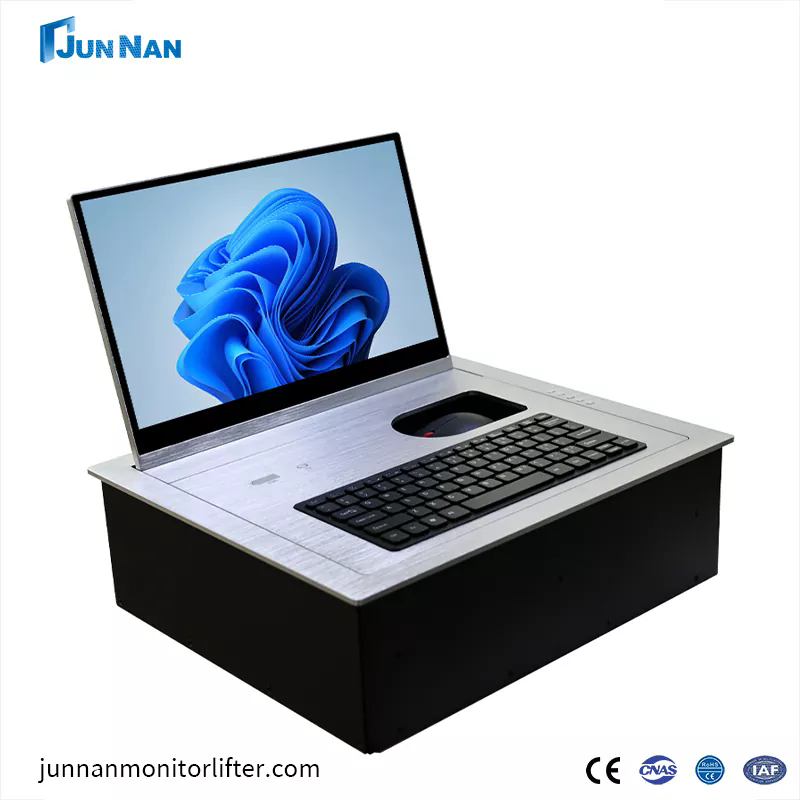Understanding the LCD Monitor Flip-Flop: A Guide to Display Versatility
2024-08-20
In the world of display technology, versatility and adaptability are key factors that enhance user experience and functionality. One interesting feature that showcases these attributes is the LCD monitor flip-flop mechanism. This blog will explore what an LCD monitor flip-flop is, its benefits, applications, and how it contributes to the evolving landscape of display technology.
What is an LCD Monitor Flip-Flop?
An LCD monitor flip-flop is a mechanism that allows an LCD monitor to pivot, rotate, or flip to different orientations. This feature enables users to adjust the monitor’s position for various viewing angles or formats, such as landscape and portrait modes. The flip-flop functionality provides greater flexibility in how the monitor is used and positioned, making it a valuable tool in both professional and personal settings.
Key Features of LCD Monitor Flip-Flop Mechanisms
1. Rotation and Pivoting: The flip-flop mechanism allows the monitor to rotate or pivot around its base. This rotation can be adjusted to different angles, accommodating various viewing preferences and tasks.
2. Portrait and Landscape Modes: With the flip-flop feature, users can easily switch between portrait (vertical) and landscape (horizontal) orientations. This adaptability is useful for different types of work, such as coding, writing, or graphic design.
3. Adjustable Stands: Many LCD monitors with flip-flop mechanisms come with adjustable stands that support height adjustments, tilting, and swiveling. This adds to the overall ergonomic flexibility and comfort.
4. Locking Mechanism: To ensure stability, the flip-flop mechanism often includes a locking feature that keeps the monitor securely in place once the desired orientation is set.
5. Ease of Use: The mechanism is designed for smooth operation, allowing users to change the monitor’s orientation with minimal effort. This user-friendly feature enhances overall convenience and productivity.
Benefits of LCD Monitor Flip-Flop Mechanisms
1. Enhanced Ergonomics: The ability to adjust the monitor's orientation helps reduce neck and eye strain by allowing users to position the screen at the optimal angle. This ergonomic flexibility contributes to a more comfortable and healthy workspace.
2. Improved Productivity: Switching between portrait and landscape modes can boost productivity by providing the best screen orientation for specific tasks. For example, portrait mode is ideal for reading long documents, while landscape mode is better for multitasking and viewing multiple windows.
3. Versatile Applications: The flip-flop feature supports a wide range of applications, from graphic design and data analysis to content creation and gaming. The ability to adapt the display to different needs enhances its versatility.
4. Space Optimization: By adjusting the monitor's orientation, users can better utilize desk space and accommodate different setups. This flexibility is particularly beneficial in environments with limited space.
5. Collaboration and Presentation: In collaborative settings, the ability to rotate the monitor for shared viewing can facilitate discussions and presentations. This feature is useful for meetings, brainstorming sessions, and group work.
6. Customizable Viewing Experience: Users can tailor their viewing experience to personal preferences and specific tasks, improving overall comfort and effectiveness.
Applications of LCD Monitor Flip-Flop Mechanisms
1. Professional Workspaces: In office environments, flip-flop mechanisms enhance ergonomics and productivity. Professionals in fields such as graphic design, programming, and writing benefit from the ability to switch between different screen orientations.
2. Creative Industries: Graphic designers, photographers, and video editors often use monitors in portrait mode for detailed editing and in landscape mode for viewing full-width content. The flip-flop feature supports these diverse needs.
3. Education: In educational settings, the flip-flop mechanism allows teachers and students to adjust monitor orientations for different teaching methods and learning activities. This flexibility supports interactive and engaging lessons.
4. Healthcare: Medical professionals use monitors to review patient records, images, and other data. The ability to switch between orientations helps optimize the viewing of complex information.
5. Gaming: Gamers may use the flip-flop feature to adjust the monitor's orientation for a more immersive experience. For some games, portrait mode can provide a unique advantage or enhanced visual experience.
6. Home Offices: Individuals working from home can benefit from the ergonomic and functional advantages of a flip-flop monitor, making it easier to adapt the workspace to various tasks and preferences.
Future Trends and Innovations
As display technology continues to advance, several trends and innovations are shaping the future of LCD monitor flip-flop mechanisms:
1. Integrated Touchscreens: Future monitors may combine flip-flop mechanisms with touchscreen capabilities, offering an enhanced interactive experience while maintaining adjustable orientations.
2. Smart Features: Integration with smart technologies, such as voice control or automated adjustments, could further enhance the convenience and functionality of flip-flop monitors.
3. Advanced Ergonomics: Continued improvements in ergonomic design will provide even greater flexibility and comfort, with innovative stands and mounting solutions that support a wider range of movements and adjustments.
4. Sustainability: As environmental concerns grow, manufacturers may focus on developing eco-friendly materials and energy-efficient technologies for LCD monitors, including those with flip-flop mechanisms.
5. Modular Designs: Future monitors may feature modular designs that allow users to customize and upgrade components, including flip-flop mechanisms, to meet evolving needs and preferences.
Conclusion
The LCD monitor flip-flop mechanism represents a significant advancement in display technology, offering users enhanced flexibility, ergonomics, and productivity. By allowing easy adjustments between portrait and landscape orientations, flip-flop monitors cater to a wide range of applications and preferences. As technology continues to evolve, the features and capabilities of flip-flop monitors are expected to advance, providing even greater benefits and functionality. Embracing these innovations can lead to a more adaptable, efficient, and enjoyable computing experience.



